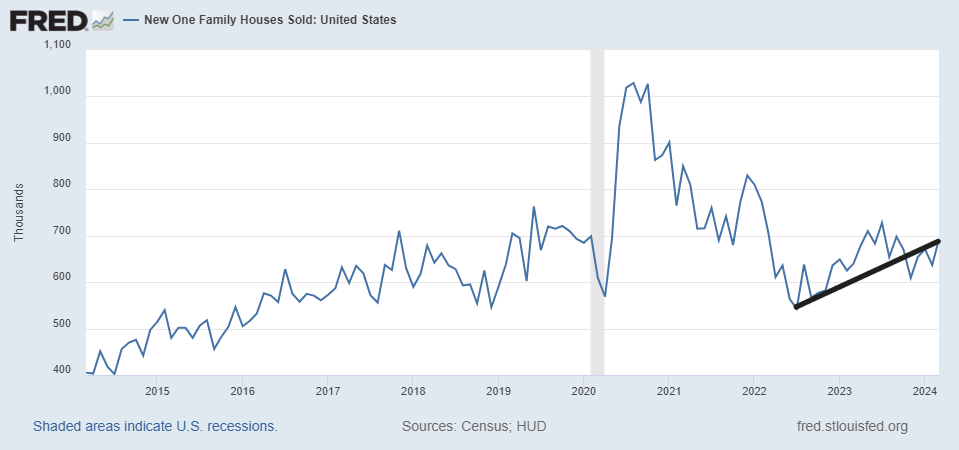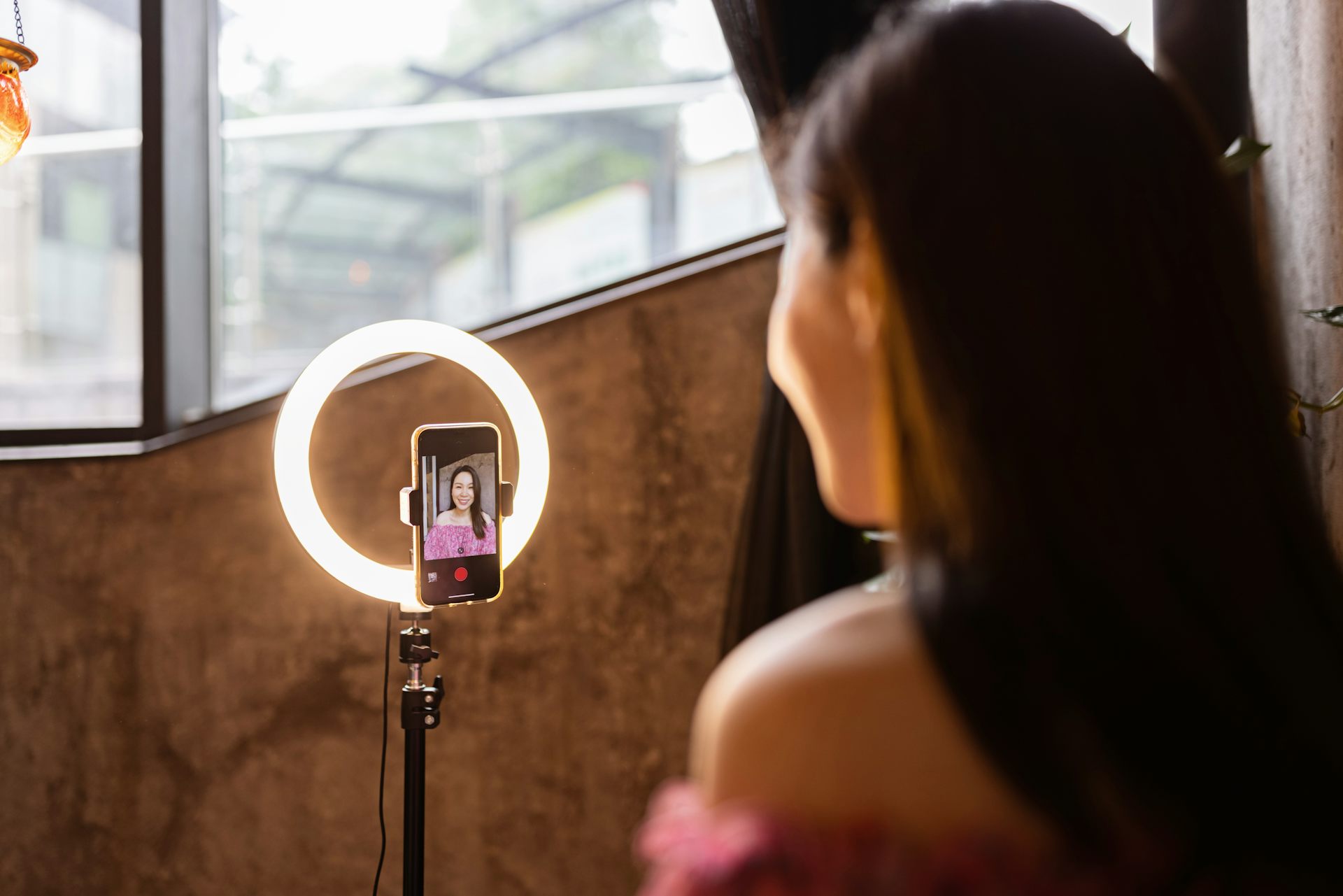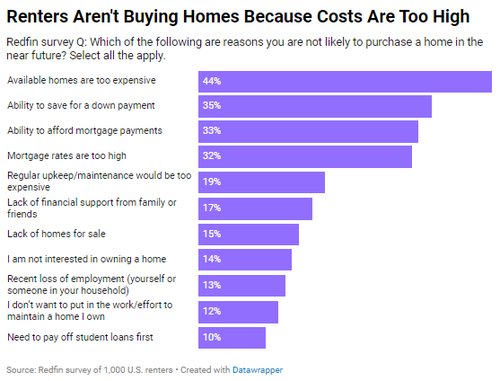Uncategorized
New home sales still growing from 2022 lows
We have to remember the builders are growing sales because they live in a sub-6% mortgage rate world, not like the existing home marketplace.

New home sales have been one of the brighter housing stories since the home sales crash in 2022 — as we can see in the chart below, new home sales have been able to grow since then. This is one reason why the homebuilder stocks have done so well since November of 2022. The mistake some people made here was that in 2021 and 2022, some people believed housing was overbuilt and lacked the demographic demand to get sales to rise from such low levels in 2022.
When we take a more extended look at new home sales, we aren’t working from an elevated level — slow and steady wins this race. We have to remember the builders are growing sales because they can live in a sub 6% mortgage rate world, not a 7%-plus mortgage rate world like the existing home sales marketplace.

However, higher mortgage rates are already impacting the builders confidence like they did last year. We have seen a halt to the builder’s confidence data, which is more representative of smaller builders who don’t have the same type of profit margins to pay down rates for their buyers.
So the question is: Will higher mortgage rates impact new home sales in the future?
The short answer is yes, because as mortgage rates were headed toward 8% last year, we saw a slowdown in new home sales as even this sector can’t hold off the financial conditions getting much tighter for housing. Of course, this marketplace is much smaller than the existing home sales marketplace, which is in the third calendar year of the lowest home sales ever. More on that topic and why existing home prices are still up here.
Now, the builders can mitigate the damage of higher mortgage rates and prevent home sales from dropping to the lowest level of sales ever (which was in 2010 at 305,000.) Still, if rates go much higher, the builders would need to get more accommodating in their pricing and rate buydowns, which means single-family permits should be falling. That was the case in the most recent housing starts report. Already, 5-unit permits are at the COVID-19 recession lows and single-family permits dipped for the first time in a while.
Now, we all must remember the builders aren’t the March of Dimes; they’re here to make money and the active inventory of completed units is back to 89,000. Yes, you read correctly — we have 89,000 completed new homes for sale! But the builders will halt permits in a second if they don’t think they can sell these homes once they’re completed, so we might be in the early stages of seeing a decline in single-family permits, like we saw in 2022. Remember, even during the housing bubble crash years, this data line didn’t reach 200,000.

So, overall, new home sales did beat estimates, but the revisions were all negative for the previous three months. The monthly supply of new homes is still at an elevated level of 8.3 months, as we can see in the chart below.

Mortgage rates have increased recently, and we’re seeing growing inventory in the builder’s main competition, existing homes. So, this is something we all need to keep an eye on because one of my recession flags, the last one that needs to go up again, is that the permits and housing starts fall, leading to job losses among residential construction workers. So far, that hasn’t happened, but as you can see below, it’s a staple event that occurs before every recession.

For now, the economic cycle is intact, but we want to connect the dots so we can be the detective and not the troll. We want to keep close attention on this data line going out the next few months
recession covid-19 stocks home sales mortgage rates recessionUncategorized
TikTok and Instagram are full of misleading information about birth control — and wellness influencers are helping drive these narratives
Social media has transformed how we connect and communicate online — affecting even how we get health information.

There’s been an increase in content posted on TikTok and Instagram recently discussing the alleged dangers of birth control. Content creators have shared concerns about the pill’s side-effects ranging from weight gain to low libido and fluctuating moods. Other claims are misleading because they exaggerate the risks associated with contraception, cancer and infertility.
Many of these posts and videos are created by wellness influencers who foster the impression of authenticity by sharing their personal lives with their followers. This presents them as trustworthy, despite lacking medical qualifications, making it difficult for people to discern what to believe and who to trust.
The wellness movement first emerged in the US in the 1970s as an alternative to the standard medical treatment model. Rather than framing health as the absence of disease, pioneers of the wellness movement conceived of wellness as a lifestyle driven towards the pursuit of optimal health and vitality.
The movement was inspired by High Level Wellness, a book published in 1961 by statistician and medical doctor Halbert L. Dunn. Dunn believed wellness involved a holistic approach to health, encompassing the mind, body and spirit to maximise a person’s potential.
The ethos and alternative lifestyle practices associated with the wellness movement resonated with the hippy movement. It also coalesced with other countercultural movements – such as the civil rights movement and the women’s movement.
The women’s movement championed a woman’s right to bodily autonomy, critiquing what they perceived to be a patriarchal medical system in post-war America. Activists fought for a woman’s right to be involved in decisions about her health and the treatments she received.

This article is part of Quarter Life, a series about issues affecting those of us in our 20s and 30s. From the challenges of beginning a career and taking care of our mental health, to the excitement of starting a family, adopting a pet or just making friends as an adult. The articles in this series explore the questions and bring answers as we navigate this turbulent period of life.
You may be interested in:
If you get your financial advice on social media, watch out for misinformation
Is it ethical to watch AI pornography?
Women’s rights activists also fought for reproductive rights, including the right of unmarried women to legally be prescribed contraceptives.
But today’s online backlash to birth control occurs in a context where women’s reproductive rights have been curtailed. If natural contraceptive methods result in an unwanted pregnancy, some women no longer have the right to choose. This raises questions about how the pill has been re-framed from a source of liberation to harmful by some female wellness influencers.
The role of social media
Social media has changed how we connect and communicate online. It’s also lowered the barrier to achieving fame, enabling content creators to establish personal brands and large followings by sharing their experiences and lifestyle advice.
Unlike the doctor-patient relationship, which is characterised by professional distance, influencers establish trust and intimacy by fostering the impression of accessibility with their followers. This typically involves providing backstage access to their personal lives and being vulnerable with their audience by sharing personal failures and triumphs.
There’s a tendency to trust those we perceive to be like us. This is why many women may consult friends and relatives for health information. People trust influencers because they appear accessible, authentic and autonomous – independent from the media and the political and commercial interests associated with traditional experts and authority figures.

The inclination to look beyond institutional expertise for health information is not new. Scientific knowledge has always been constructed through a combination of expert and non-expert voices. What has changed is that science communication is happening online, with social media enabling people to create and broadcast content publicly on these sites – regardless of whether they’re an expert or not. In some cases, disinformation is being collectively created and shared online.
Where the wellness movement was once primarily associated with liberal ideologies, many journalists and researchers have recently observed an intersection between wellness discussions and far-right politics. This shift was accentuated by the pandemic, when wellness became a gateway to misinformation and conspiracy theories.
Despite this convergence, the backlash against contraception cannot be reduced solely to politics. While some conservative influencers encourage natural contraceptive methods (such as timing sex to menstrual cycles) instead of synthetic hormonal contraception, many influencers have more generic concerns about the financial and political incentives of corporations and pharmaceuticals companies that have persisted for decades.
These concerns often manifest in critiques of experts and elites, who they see as compromised by money and power.
Instead, wellness influencers commonly prioritise what my colleague and I previously termed “native expertise” – knowledge derived from intuition and experience rather than professionals. This often manifests in the promotion of lifestyles depicted as natural, ancestral or primal. The experts and doctors these influencers trust tend to be those rejected by the establishment.
Many wellness influencers today share similar concerns as the women’s movement in the 1970s about male doctors telling women what to do with their bodies. They want to be heard, believed and gain control over their body. But one of the striking differences between the women’s movement and the female entrepreneurs championing women’s health online, is that the advice influencers share is often monetised. Most influencers appear to be less interested in political change and more interested in promoting a specific lifestyle, product or service.
Why this matters
In the late 20th century, the wellness movement gave way to the wellness industry. Wellness became a commodity.
Social media has further commodified wellness, with influencers using wellness to create lucrative personal brands. The financial gains that can be made from sowing distrust and establishing oneself as a credible alternative make women’s wellness a confusing space for consumers to navigate.
Influencers typically share opinions rather than facts, making their content difficult to regulate as they often user disclaimers to legally protect themselves. Rather than diminish their authority, these anecdotes are central to it – with influencers trading on their apparent ordinariness.
Read more: The online wellness industry: why it's so difficult to regulate
Those critical of contraception could be motivated by a variety of different factors and experiences and it would be a mistake to reduce all criticisms to misinformation. But who we trust influences what we believe. If the backlash to contraception highlights anything, it’s that misinformation is more about trust, identity and relationships than information.
Stephanie Alice Baker does not work for, consult, own shares in or receive funding from any company or organisation that would benefit from this article, and has disclosed no relevant affiliations beyond their academic appointment.
treatment pandemicUncategorized
New Home Sales Increase to 693,000 Annual Rate in March
The Census Bureau reports New Home Sales in March were at a seasonally adjusted annual rate (SAAR) of 693 thousand.
The previous three months were revised down combined.
Sales of new single‐family houses in March 2024 were at a seasonally adjusted an…

The previous three months were revised down combined.
Sales of new single‐family houses in March 2024 were at a seasonally adjusted annual rate of 693,000, according to estimates released jointly today by the U.S. Census Bureau and the Department of Housing and Urban Development. This is 8.8 percent above the revised February rate of 637,000 and is 8.3 percent above the March 2023 estimate of 640,000.Click on graph for larger image.
emphasis added
The first graph shows New Home Sales vs. recessions since 1963. The dashed line is the current sales rate.
New home sales were close to pre-pandemic levels.
The second graph shows New Home Months of Supply.
 The months of supply decreased in March to 8.3 months from 8.8 months in February.
The months of supply decreased in March to 8.3 months from 8.8 months in February. The all-time record high was 12.2 months of supply in January 2009. The all-time record low was 3.3 months in August 2020.
This is well above the top of the normal range (about 4 to 6 months of supply is normal).
"The seasonally‐adjusted estimate of new houses for sale at the end of March was 477,000. This represents a supply of 8.3 months at the current sales rate."Sales were above expectations of 670 thousand SAAR, however, sales for the three previous months were revised down, combined. I'll have more later today. home sales pandemic
Uncategorized
Biden’s America: 40% Of Renters Think They’ll Never Own A Home, Up From 27% Last Year
Biden’s America: 40% Of Renters Think They’ll Never Own A Home, Up From 27% Last Year
Bidenomics 101: the American dream of owning a home…

Bidenomics 101: the American dream of owning a home has become the American nightmare for almost half the US population.
As housing specialist Redfin reports, rising home prices and mortgage rates "are making it harder to believe in the American dream of homeownership. Lack of affordability is the most commonly cited reason renters don’t believe they’ll ever own a home."
The details are dire: Nearly two in five (38%) U.S. renters don’t believe they’ll ever own a home, up from roughly one-quarter (27%) less than a year ago.
This is according to a Redfin-commissioned survey of roughly 3,000 U.S. residents conducted by Qualtrics in February 2024. This report focuses on the 1,000 respondents who indicated they are renters. The relevant questions were: “Do you believe that you will ever own your own home in the future?” and “Which of the following are reasons you aren’t likely to purchase a home in the near future?” The 27% comparison is from a Redfin survey conducted in May and June 2023.
Lack of affordability is the prevailing reason renters believe they’re unlikely to become homeowners. Nearly half (44%) of renters who don’t believe they’ll buy a home in the near future said it’s because available homes are too expensive. The next most common obstacles: Ability to save for a down payment (35%), ability to afford mortgage payments (33%) and high mortgage rates (32%). Roughly one in eight (14%) simply aren’t interested in owning a home.
Buying a home has become increasingly out of reach for many Americans due to the one-two punch of high home prices and high mortgage rates. First-time homebuyers must earn roughly $76,000 to afford the typical U.S. starter home, up 8% from a year ago and up nearly 100% from before the pandemic, according to a recent Redfin analysis. Home prices have skyrocketed more than 40% since 2019, due to the pandemic homebuying frenzy and a shortage of homes for sale. And the current average 30-year fixed mortgage rate is 6.82%. While that’s below the 23-year-high of nearly 8% hit in October, it’s still more than double the record low rates dropped to in 2020.
Home prices have risen 7% in the last year alone, and monthly mortgage payments have risen more than 10%, which helps explain why renters today are more likely than they were last year to say they don’t see themselves owning a home anytime soon.
Many renters can’t fathom homeownership because they’re already struggling to afford their monthly housing costs. Nearly one-quarter (24%) of renters say they regularly struggle to afford their housing payments, and an additional 45% say they sometimes struggle to do so.
Rents have soared over the last few years because so many people moved during the pandemic, upping demand for rentals. The median U.S. asking rent is roughly $2,000, near the record high hit in 2022–but the good news for renters is that prices aren’t growing nearly as fast as they were during the pandemic, partly because an influx of apartment supply is taking some of the heat off prices.
“Housing costs are high across the board, but renting is a more affordable and realistic option for many Americans right now–especially those who have never owned a home and aren’t able to tap into equity from a previous sale,” said Redfin Chief Economist Daryl Fairweather. “While owning a home is usually a sound longterm investment, the barriers to entry and upfront costs of buying are higher than renting. Buying typically requires a sizable down payment and approval for a mortgage–things that are difficult for many people today, when the typical down payment is near $60,000 and mortgage payments are sky-high. The sheer expense of purchasing a home is causing the American Dream of homeownership to lose some of its shine.”
Gen Z renters are most likely to believe they’ll own a home
Broken down by generation, Gen Z renters are by far the most likely to believe they will become homeowners (maybe it's because they are also the dumbest). Just 8% of Gen Z renters believe they’ll never own a home, compared to 22% of millennials, 40% of Gen Xers and 81% of baby boomers.
-

 International1 month ago
International1 month agoParexel CEO to retire; CAR-T maker AffyImmune promotes business leader to chief executive
-

 Government2 weeks ago
Government2 weeks agoClimate-Con & The Media-Censorship Complex – Part 1
-

 International4 days ago
International4 days agoJ&J’s AI head jumps to Recursion; Doug Williams resigns as Sana’s R&D chief
-

 International1 week ago
International1 week agoWHO Official Admits Vaccine Passports May Have Been A Scam
-

 Spread & Containment2 weeks ago
Spread & Containment2 weeks agoFDA Finally Takes Down Ivermectin Posts After Settlement
-

 Uncategorized3 weeks ago
Uncategorized3 weeks agoVaccinated People Show Long COVID-Like Symptoms With Detectable Spike Proteins: Preprint Study
-

 Uncategorized3 weeks ago
Uncategorized3 weeks agoCan language models read the genome? This one decoded mRNA to make better vaccines.
-

 Uncategorized2 weeks ago
Uncategorized2 weeks agoWhat’s So Great About The Great Reset, Great Taking, Great Replacement, Great Deflation, & Next Great Depression?

















